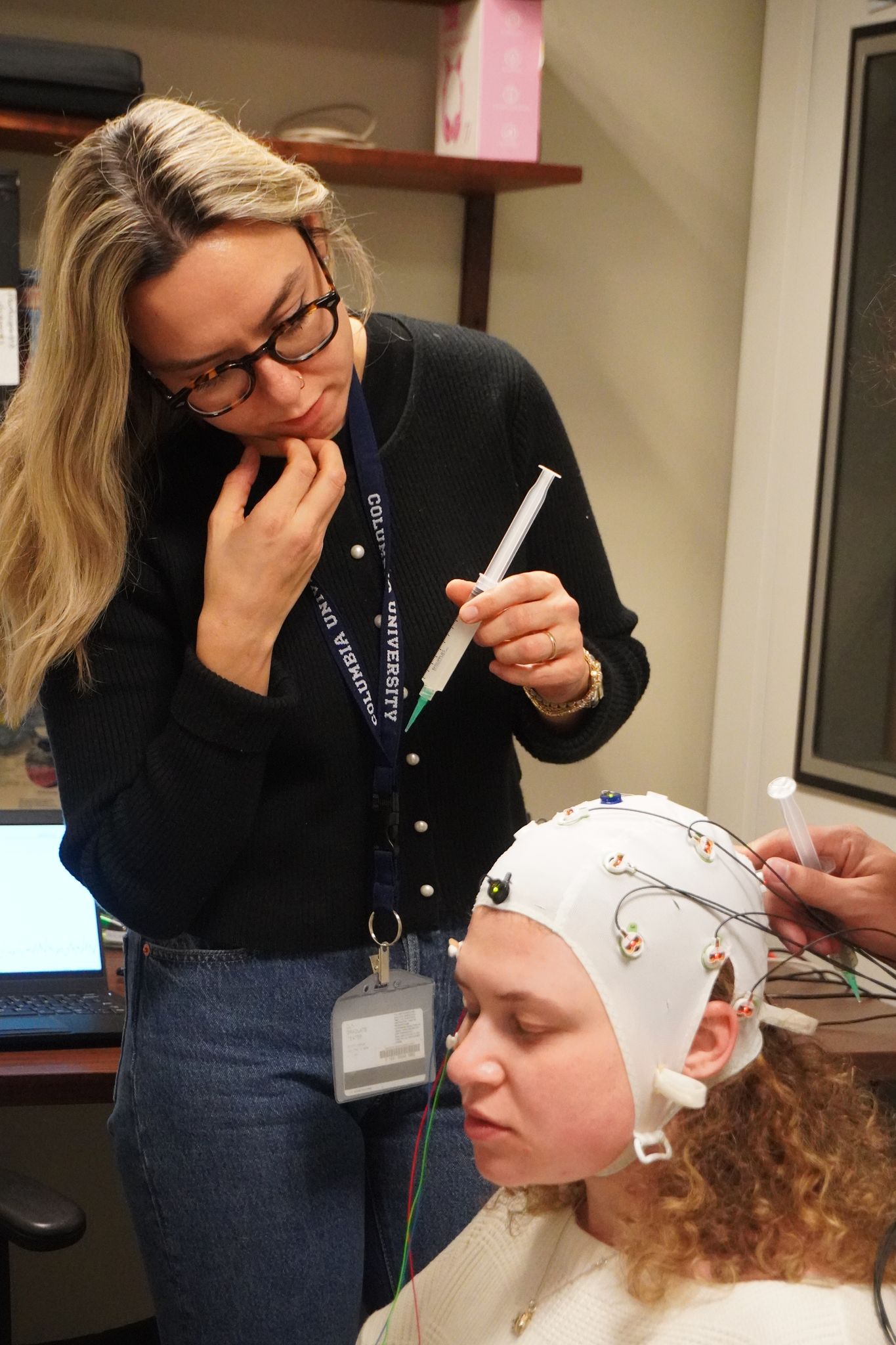We investigate how infants and children learn language—using safe, non‑invasive EEG/ERP methods. Our studies span typical and atypical development (ASD and SLI), bilingual language experience, and the auditory foundations of speech perception.


We investigate how infants and children learn language—using safe, non‑invasive EEG/ERP methods. Our studies span typical and atypical development (ASD and SLI), bilingual language experience, and the auditory foundations of speech perception.

Safe, participant-centered procedures and carefully calibrated methods ensure reliable, high-quality data.
We investigate how the brain processes language and communication across the lifespan. Our studies are designed to be safe, comfortable, and engaging for every participant.
When you arrive, one of our research assistants will greet you and explain the study. Before beginning, the researchers will answer your questions and make sure you feel comfortable in the environment.
A soft electrode net is gently fitted on your head. The net is lightweight, with small sponges that feel cool and damp but are not painful. This step takes just a few minutes, and adjustments are made so that you feel completely at ease.
Once ready, you will sit comfortably in a quiet room while listening to sounds and sometimes viewing simple images on a screen. The session is divided into short segments with breaks in between, lasting about 25–30 minutes. Our methods are safe and have been used with participants of all ages for decades. You are free to stop at any time, and your comfort is always our top priority.
Our work bridges cognitive neuroscience and linguistics, using EEG/ERP methods to investigate language acquisition, auditory processing, and brain development from infancy through adulthood.
EEG/ERP studies of speech perception, discrimination, and word learning from infancy onward.
Neurophysiological impact of dual language exposure on processing and learning.
Research exploring persistent difficulties in language acquisition and use.
Research on how the brain encodes, discriminates, and processes speech sounds.
Below you will find answers to common questions related to our research infrastructure, collaborative procedures, and data handling practices within the laboratory.
The laboratory primarily engages in interdisciplinary research in neurolinguistics, auditory processing, and cognitive neuroscience, using a range of electrophysiological and behavioral methodologies.
Yes. The lab regularly engages in national and international collaborations. Interested parties should contact the principal investigator with a formal proposal or letter of intent.
Absolutely. The lab provides training and mentorship for students at various academic levels, including honors projects, theses, and doctoral dissertations under faculty supervision.
All data are collected under institutionally approved ethical protocols and stored in secure, access-controlled servers, in compliance with data protection regulations and research integrity guidelines.